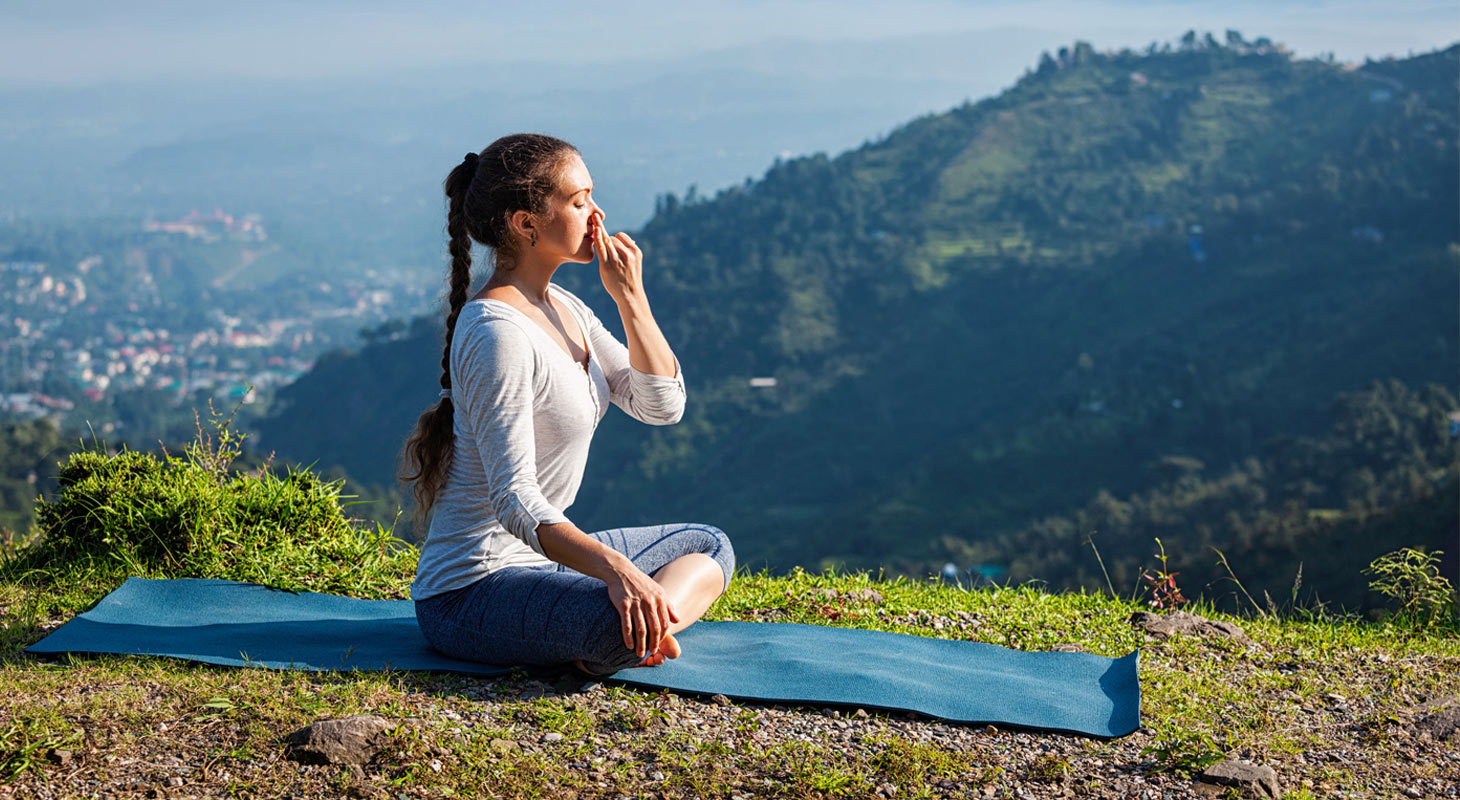Pranayama : knowing breathing exercises in Yoga
Discover through this article all you need to know about pranayama. Pranayama is composed of the root words " Prana " which means breath or life force, " yama " which means control or discipline and " ayam " which means expansion. Translations of the meaning of pranayama refer to "the expansion of life force through breath control". In practical terms, it refers to a set of breathing techniques used for relaxation, concentration and meditation.
The importance of Prana is emphasized through yoga.
Many yoga masters illustrate this by demonstrating the importance of breathing to sustain life. A very effective illustration is provided by comparing the time people can survive without food (a few weeks), water (a few days), with the time people can survive without air (only a few minutes).
Efficient and effective breathing is essential to absorb the required amounts of oxygen to support daily activities.
Yoga identifies 4 phases of the breathing cycle, all of which should be controlled. These are:
• Inhalation (Puraka) - which focuses on controlling the air intake, keeping it gentle and effective;
• Internal Air Retention (antara kumbhaka) - which focuses on controlling air retention in the lungs after inhalation;
• Exhalation (Recaka) - which focuses on controlling the expulsion of used air and the size of the lungs;
• External Retention (bahya kumbhaka) - which focuses on controlling the retention of empty lungs after exhalation.
Many Pranayama techniques, but not all, aim at prolonging the duration of each of these 4 stages of the respiratory cycle.
Pranayama techniques to extend the respiratory cycle
Among these techniques is the development of a long, gentle and regular inhalation that has the same duration as the exhalation and making sure that the lungs are completely full or completely empty at the end of each movement.
There is also the extension of the duration of breathing with both full and empty lungs to increase the efficiency of the breathing cycle. Controlling breathing in this way requires the use of the mind to resist the body's natural and automatic impulses and desires to breathe, especially during the internal and external retention of breath.
Not only do these yoga breathing techniques have a direct impact on the brain by altering the amount of oxygen supplied to the brain by the blood, but focusing on breathing in this way has a profound effect on the mind and concentration.
All this makes Pranayama an important practice to improve relaxation, concentration (Dharana) and meditation (Dhyana).
More concretely, restricting the flow of oxygen to the brain can lead to fainting, dizziness or light-headedness. If any of these or other side effects occur, the practice should be stopped until further notice.
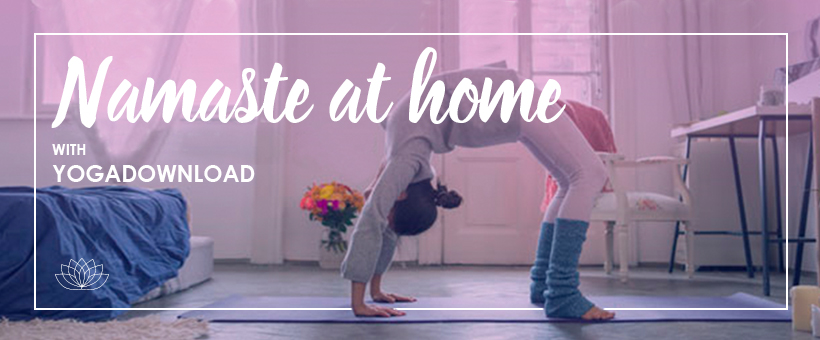
How pranayama works
During breathing, we suck in air, the lungs oxygenate the blood and expel carbon dioxide and other waste gases from the blood. These gases are expelled when we exhale. This process is subconscious or autonomous and does not necessarily take place in a balanced and efficient way.
Pranayama consists of bringing the mental consciousness to the normally subconscious activity of breathing in order to make it more efficient and to balance the oxygen, carbon dioxide and other levels of soluble gases in the blood. With this awareness, we use the mind to control the body. In yogic terms, being able to control the mind is essential for concentration (Dharana) and meditation (Dhyana). In practical terms, better mind control helps to bring emotional control, balance and mental clarity.
Also, pranayama aims to improve the efficiency of blood oxygenation. On average, people tend to take short, shallow breaths, a situation that is accentuated when they are stressed or emotional. During this shallow breathing, it is estimated that the average person uses only half to two-thirds of their lung capacity, with the remaining healthy lung surface remaining unused. This means that by breathing more optimally, each breath can transfer up to fifty percent more oxygen into the bloodstream to nourish the body.
When we breathe in, not all the air we inhale is exhaled. Some of the inhaled air and carbon dioxide waste remains in the lungs and trachea during exhalation, when you have inefficient, shallow breathing. This continues to recycle in the respiratory system, reducing the amount of new oxygen available. By breathing deeply and emptying the lungs completely, much less of this stale air and carbon dioxide remains in the lungs, improving the efficiency of each breath.
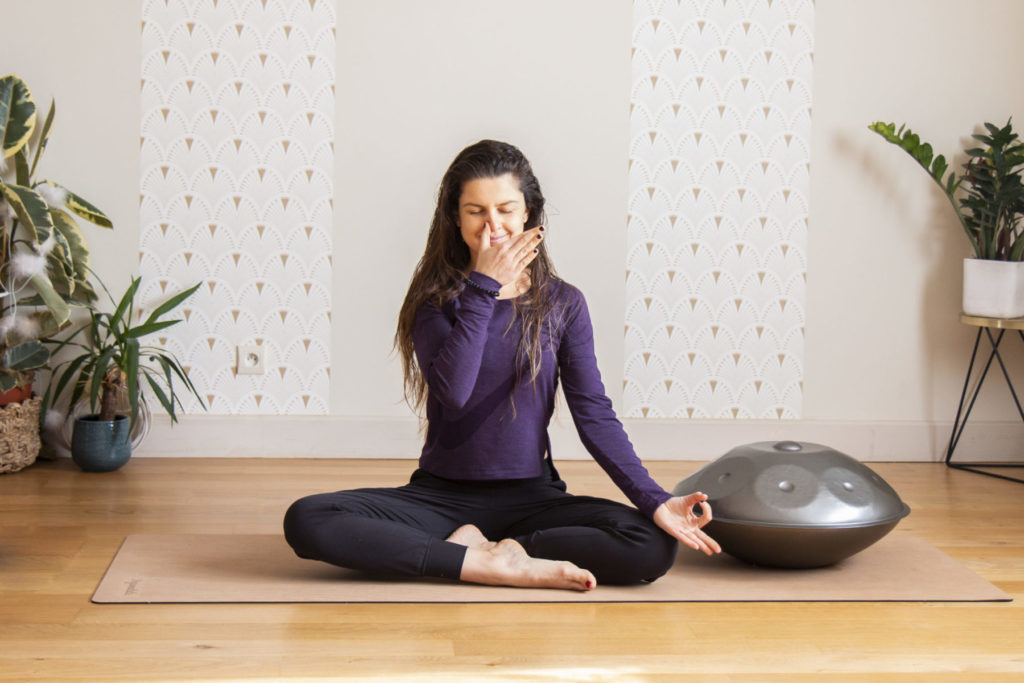
What are the advantages of Pranayama?
Pranayama has become very popular today. The principles of yoga place great importance on breathing and breath control. Each form of yoga devotes a session or two to learning the proper breathing.
Breath control begins with a deep inhalation through the lower abdomen or navel area. Then the process of breathing moves up to the lower chest area and then to the lower parts of the rib cage. The air must stop through the throat just below the sternum.
The secret to getting the full benefits of pranayama is to perform slow and uninterrupted breathing. When you exhale, make sure that the air goes through the same path it came in. The air must leave the lower throat, up to the chest and down to the lower abdomen.
Long, deep breathing can really help parasympathetic nerve function. Being actively involved can greatly reduce your blood pressure, develop body functions and other benefits of pranayama.
It can repair serious problems and damage in the body's systems, including the reproductive, digestive and immune systems.
Another of the benefits of pranayama is that it helps yogis relieve the stress of their lives. Practitioners of this yoga learn to focus on the positive instead of the negative.
Slower and deeper breathing brings total relaxation to the mind. And as yoga slowly releases one's thoughts, pranayama develops the person's ability to concentrate. With time, the person achieves inner peace and positive aura.
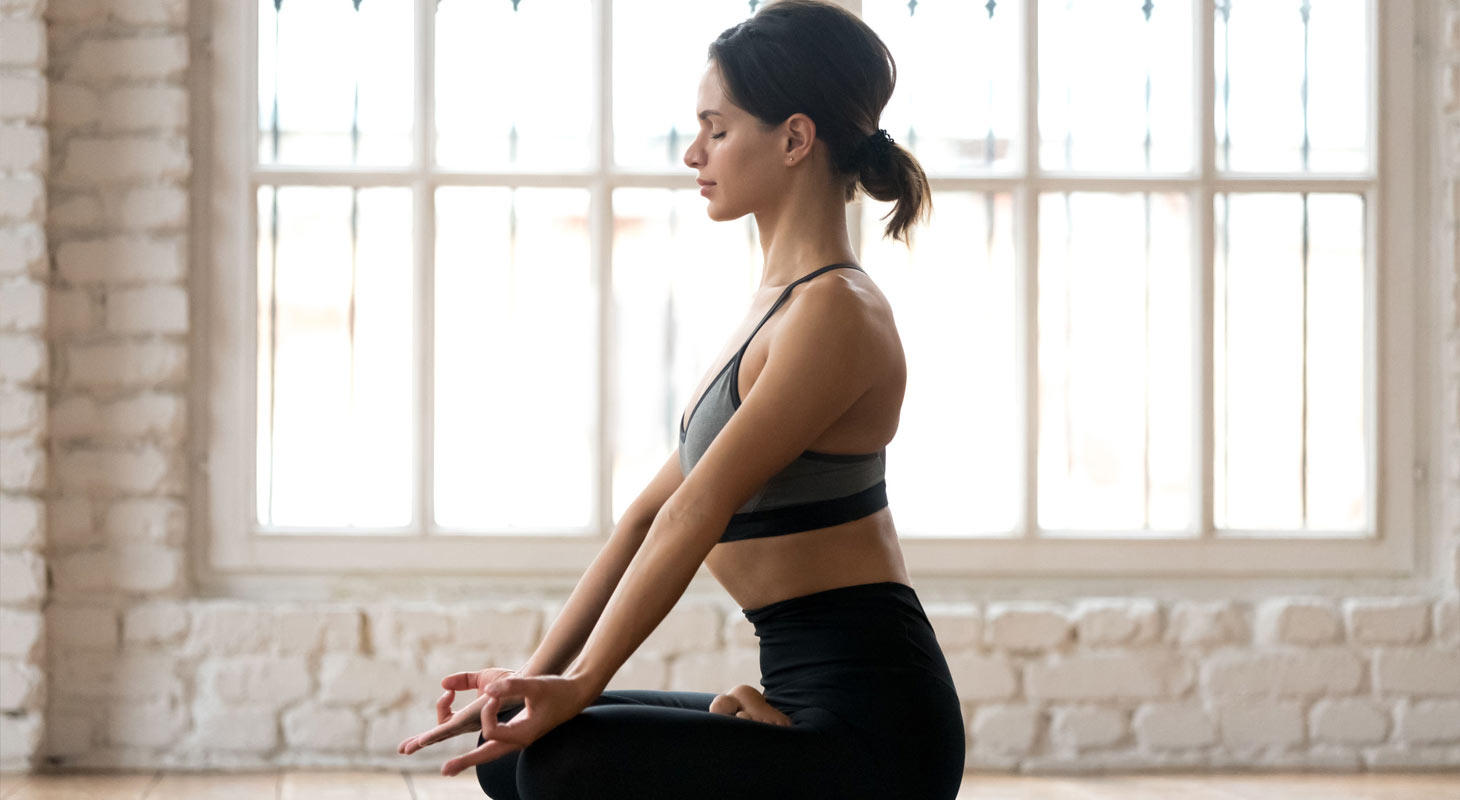
Holistic benefits of Pranayama Yoga
Pranayama is really the best method to reduce depression and stress. The benefits of pranayama are best obtained if practiced with other exercises. Learning to breathe properly will be the main objective and, when practiced over extended periods of time, it can improve overall health.
If this is your first time doing pranayama or any other type of yoga, join a professionally supervised class first. Beginners should always be guided by masters to ensure that they do the exercises correctly and without negative effects. No matter how rewarding the benefits of pranayama are, poor practice can lead to serious injury. You must also come prepared, according to your instructor's instructions. Indeed, the benefits of pranayama can help you achieve inner peace and total relaxation.
On an anatomical level, these specific breathing techniques aim to develop the resistance of the diaphragm and the capacity of the lungs to improve the efficiency of the respiratory system. They also help improve physical fitness and increase the amount of oxygen entering the bloodstream through breathing. This oxygen helps provide the energy essential for muscle and brain function.
At a more detailed level, pranayama allows:
• Increase concentration, creativity and cognitive brain function.
• Increase relaxation and calm by releasing tension.
• An improvement in the mind and physical control helping to control emotions and relieve tension.
Breathing in yoga helps to overcome many medical situations, and clinical test evidence supports some of these claims. It should be noted that pranayama should be a complement to current treatments and should be practiced under the guidance of an experienced yoga master.
The Techniques of Pranayama
In addition to the basic long and deep breathing, the most common pranayama techniques include the victorious or Ujjayi breath, fire breathing and alternate nostril breathing.
Ujayyi or victorious breathing
It is done only through the nose and causes a slight constriction at the back of the throat. Take a long breath in with your mouth closed and when you do, make it aaah; repeat on the exhalation. When done correctly, the victorious breath sounds like the ocean and is often called ocean breath. Many believe that the victorious breath generates heat in the body and clears the muscles of lactic acid buildup.
Fire Breathing
It is most often used in the practice of Kundalini yoga and is believed to relieve fatigue by restoring vitality and energy to the nervous system. Fire breathing is usually practiced for 30 seconds to 3 minutes.
To perform a Fire Breath, breathe in deeply through your nose and feel your abdomen expand outward. Exhale through your nose as your abdomen moves closer to your spine. Inhale again and this time when you exhale, voluntarily bring your abdomen back towards the spine several times, as if you were pumping a chimney bellows. The force of your exhalation should feel like a long, loud sniff.
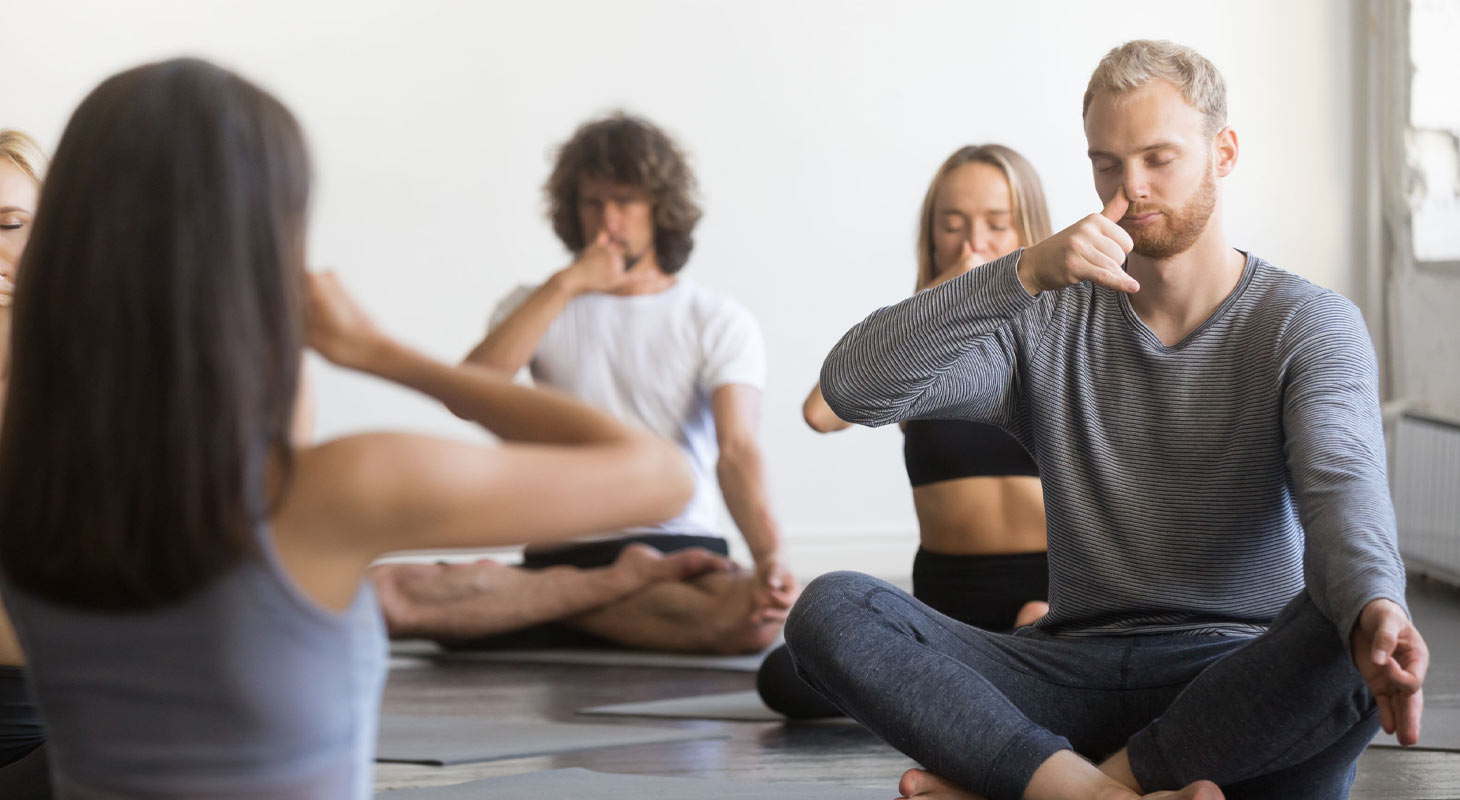
Alternating nostril breathing
It soothes a busy mind, helps relieve insomnia and cools the body. Although it may seem uncomfortable at first, once you reach a certain rhythm, you will feel the effects of the extra oxygen in your system almost immediately. Alternating nostril breathing would also help connect the left and right halves of the brain.
To begin, place your right thumb over your right nostril and your right ring finger over your left nostril. Gently close your right nostril and breathe in through your left nostril. Inhale for 4 seconds. Then close your left nostril at the same time as you release the right one and exhale through your right nostril for 8 seconds. Then inhale through your right nostril for 4 seconds, then release your left nostril and close your right and exhale through your left nostril for 8 seconds.

Conclusion on pranayama
Pranayama is a traditional system of breathing exercises in Yoga. Pranayama can be practiced alone or as a preparation for other meditation exercises. The purpose of pranayama is to control our breathing and thus help control our thoughts. If we practice pranayama correctly, we can bring peace and purity to our inner system. By practicing it sincerely, it can help you to improve your concentration and physical health.


